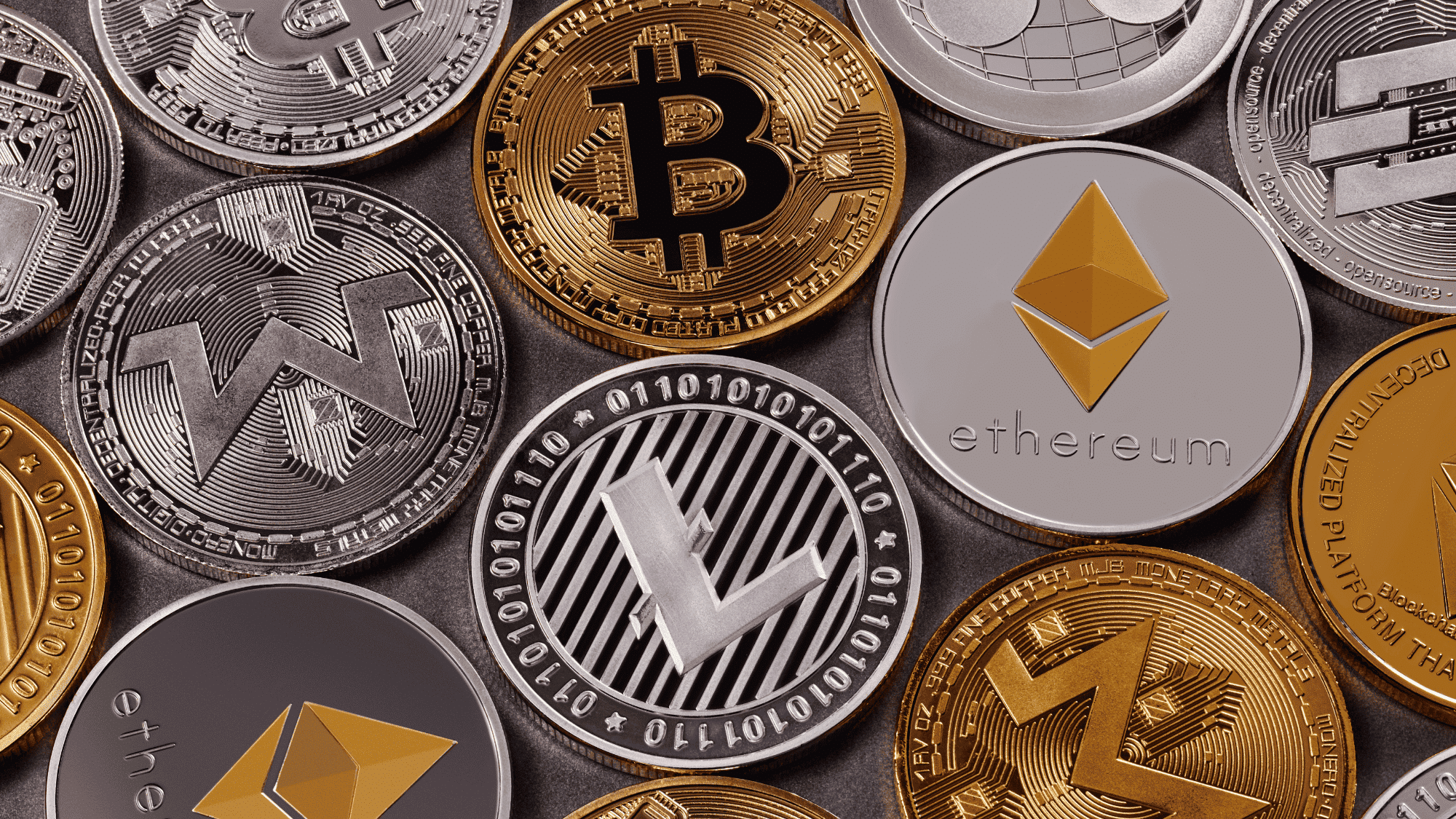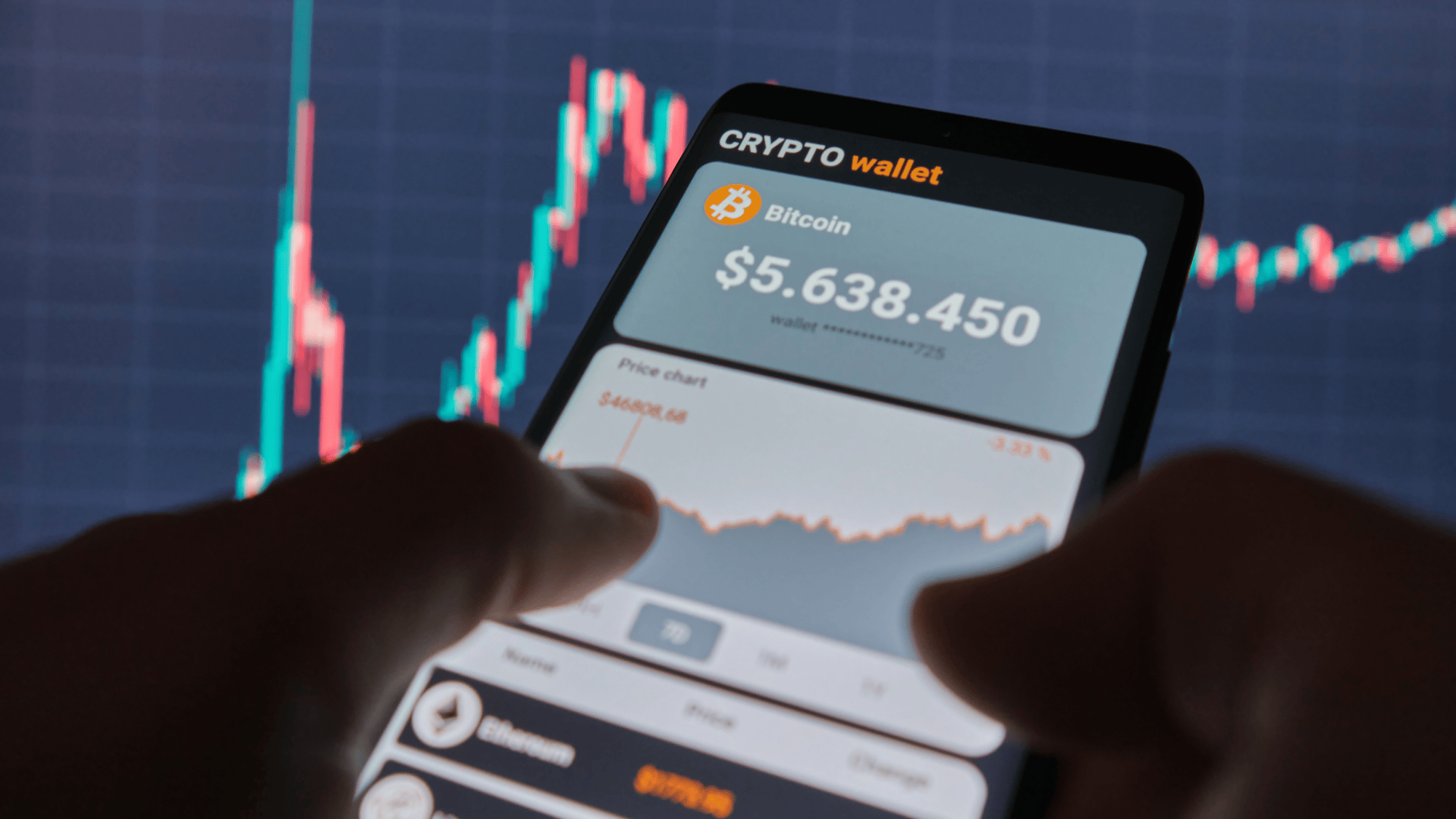When I first started reading about cryptocurrency, I felt like I was trying to learn a secret language. Everyone around me seemed to throw around words like HODL, blockchain, and DeFi as if they were part of everyday talk.
If you’ve ever felt lost trying to understand crypto terms, don’t worry, you’re not alone.
I’ve put together this guide to help you learn the most important and commonly used words in the crypto world.
If you’re planning to invest, trade, or simply follow cryptocurrency news, knowing this vocabulary will make everything easier. Let’s break it down together, one term at a time.
What are Crypto Terms and Why They Matter?
If you’ve ever read a crypto post and felt completely lost, you’re not alone. The crypto world has its own vocabulary that every beginner should know.
- Crypto terms are special words and abbreviations used in blockchain, trading, and online communities.
- Understanding them helps you follow the news, trade smartly, and avoid scams.
- They appear everywhere, from DeFi platforms to NFT marketplaces and even Twitter threads.
- Knowing this language boosts your confidence and makes it easier to join crypto discussions.
- It also helps you spot fake advice or shady projects that rely on confusing jargon.
Once you understand these basic cryptocurrency terms, everything else in the crypto space starts to make sense. It’s your first step toward becoming truly crypto-savvy.
Must-Know Crypto Terms for Beginners
Before going into trading or investing, it’s important to understand the core technology behind cryptocurrencies. These foundational crypto terms explain how blockchain systems actually work.
Foundation & Technology

1. Blockchain
A blockchain is a digital ledger that stores transactions securely and transparently across multiple computers. It’s made up of blocks that are linked together in chronological order, making it nearly impossible to change or hack.
Think of it as a permanent public record book for digital money that everyone can verify but nobody can alter without consensus.
2. Mining
Mining is how new cryptocurrencies are created and transactions are verified on the blockchain. Miners use powerful computers to solve complex mathematical puzzles, and in return, they earn coins like Bitcoin as rewards.
This process also secures the network and validates every transaction. Mining requires significant computational power and electricity, which is why some networks are moving toward alternative validation methods.
3. Smart Contract
A smart contract is self-executing code that runs automatically when predetermined conditions are met—no middleman or intermediary needed.
It’s what powers DeFi platforms, NFTs, and DAOs by creating trustless agreements between parties. Once deployed on the blockchain, these contracts are immutable and transparent.
They eliminate the need for traditional legal enforcement and reduce transaction costs significantly in digital agreements.
4. Gas Fee
A gas fee is the cost you pay to execute a transaction on blockchain networks like Ethereum. It compensates miners or validators for processing your transaction and securing the network.
Gas fees fluctuate based on network congestion, higher demand means higher fees. During peak times, simple transactions can become expensive.
Understanding gas fees helps you time your transactions and choose cost-effective networks for your crypto activities.
5. Token
A token represents a digital asset built on an existing blockchain, like company shares, rewards, or utility access. Some tokens have real-world use cases, while others are used for governance voting or payments within crypto platforms.
Unlike coins that have their own blockchains, tokens operate on established networks like Ethereum. They can represent anything from physical assets to digital rights and membership privileges.
Types of Crypto Assets

6. Altcoin
Any cryptocurrency other than Bitcoin is called an altcoin, short for alternative coin. Examples include Ethereum, Solana, Cardano, and thousands of others.
Many altcoins were created to improve on Bitcoin’s perceived limitations or serve unique purposes, like powering smart contracts, enabling faster transactions, or supporting NFT marketplaces.
Each altcoin has its own features, use cases, and communities behind it.
7. NFT (Non-Fungible Token)
An NFT is a unique digital asset stored on the blockchain that represents ownership of items like art, collectibles, music, or virtual real estate.
Each NFT is one-of-a-kind and can’t be replaced or replicated by another token, that’s what makes it non-fungible.
Unlike cryptocurrencies where every Bitcoin equals another, NFTs have individual characteristics and values. They’ve revolutionized digital ownership and creator monetization.
8. Fiat
Fiat money is government-issued currency like USD, EUR, INR, or GBP that isn’t backed by physical commodities like gold.
When you trade cryptocurrency, fiat is typically what you convert your digital assets into or purchase them with. Most crypto exchanges allow you to deposit fiat currency to buy crypto or withdraw it after selling.
Understanding the fiat-to-crypto relationship is essential for calculating your real-world profits and losses.
Security & Storage

9. Wallet
A crypto wallet is a digital tool where you store your cryptocurrencies and tokens securely. It can be a mobile app, website interface, desktop program, or physical hardware device.
Wallets don’t actually store your coins, they store the private keys that give you access to your blockchain assets. There are hot wallets connected to the internet and cold wallets that remain offline for maximum security.
10. Private Key
Your private key is like a master password that unlocks your crypto wallet and authorizes transactions. Never share it with anyone, whoever has your private key has complete control of your crypto assets.
It’s a long string of random characters that’s nearly impossible to guess. Losing your private key means losing access to your funds forever, so store it securely using multiple backup methods.
11. Public Key
A public key works like your bank account number or email address—it’s completely safe to share and allows others to send you cryptocurrency. It’s mathematically generated from your private key but can’t be used to derive your private key back.
Think of it as your crypto receiving address that you can post publicly. Your public key helps confirm and verify transactions on the blockchain without compromising security.
12. Rug Pull
A rug pull is a devastating scam where developers suddenly abandon a project and disappear with investors’ funds, leaving worthless tokens behind. It’s called a rug pull because it’s like having the rug yanked out from under you.
Always check project credibility, team transparency, locked liquidity, and smart contract audits before investing. Red flags include anonymous teams, unrealistic promises, and no vested tokens.
DeFi & Platforms

13. DeFi (Decentralized Finance)
DeFi stands for decentralized finance, a revolutionary system of financial services like lending, borrowing, trading, and earning interest without using traditional banks or intermediaries.
Platforms such as Aave, Uniswap, and Compound let users interact directly with smart contracts to access these services. DeFi operates transparently on the blockchain, giving you complete control over your assets.
It’s democratizing finance by making services accessible to anyone with internet access.
14. DAO (Decentralized Autonomous Organization)
A DAO is a community-led organization that operates through smart contracts instead of traditional corporate management and hierarchy.
Members hold governance tokens that allow them to vote on important decisions, proposals, and fund allocations. This creates a transparent and democratic form of governance where power is distributed among stakeholders.
DAOs are being used for investment clubs, protocol governance, charitable foundations, and creative projects worldwide.
15. dApp (Decentralized Application)
A dApp is a blockchain-based application that runs without a central authority or single point of control. They’re used for gaming, social media, DeFi trading, NFT marketplaces, and more.
Popular dApps include OpenSea, Axie Infinity, PancakeSwap, and Decentraland. Unlike traditional apps controlled by companies, dApps operate on distributed networks where users often have governance rights.
They offer greater privacy, censorship resistance, and data ownership.
16. Staking
Staking means locking your cryptocurrency in a blockchain network to help secure it, validate transactions, and maintain operations—earning rewards in return.
It’s like earning interest by supporting the blockchain infrastructure. Staking is central to proof-of-stake networks and typically offers annual percentage yields ranging from modest to substantial.
You can stake directly through networks or use exchange platforms that simplify the process for beginners.
17. Metaverse
The metaverse is an immersive virtual world where people can work, socialize, play games, attend events, and conduct business—using digital avatars, VR technology, and cryptocurrencies.
Cryptos like Decentraland’s MANA and Sandbox’s SAND are integral parts of these digital economies. Users buy virtual land, create experiences, and trade digital goods.
The metaverse represents the convergence of gaming, social media, commerce, and blockchain technology.
18. Airdrop
An airdrop is when free tokens are distributed directly to users’ wallets, often to promote a new crypto project, reward loyal holders, or increase community engagement.
Projects use airdrops as marketing strategies to build awareness and distribute governance tokens fairly. To receive airdrops, you might need to hold certain tokens, complete tasks, or interact with platforms.
Always verify an airdrop’s legitimacy to avoid scams that try to steal wallet information.
Market Terms & Community Slang

19. HODL
HODL means “Hold On for Dear Life” and originated from a 2013 forum typo of “hold.” It now represents the strategy of keeping your cryptocurrency long-term regardless of market volatility and price swings.
HODLers believe in the long-term value of their investments and resist panic selling during downturns.
This mindset contrasts with active trading and requires strong conviction in your chosen projects and patience through market cycles.
20. Whale
A whale is an individual or institution that holds a massive amount of cryptocurrency—enough that their buying or selling activity can significantly move the market.
Their large trades can cause sudden price spikes or crashes, creating volatility for smaller investors. Whale watching involves tracking these large wallet movements to anticipate market shifts.
Understanding whale behavior helps you make informed decisions about entry and exit points.
21. FOMO
FOMO, or Fear of Missing Out, happens when investors rush to buy cryptocurrency just because prices are rising rapidly—often without proper research or understanding.
It’s one of the most common and costly mistakes beginners make in crypto investing. FOMO buying typically occurs near market peaks and leads to losses when prices correct.
Successful investors control their emotions and stick to research-based strategies instead of chasing pumping coins.
22. FUD
FUD stands for Fear, Uncertainty, and Doubt—negative rumors, misleading news, or unverified information that cause panic selling in the crypto market.
Sometimes FUD is spread intentionally by competitors or those shorting the market, even when there’s no solid reason for concern.
Learning to distinguish between legitimate concerns and baseless FUD helps you make rational decisions. Always verify information from multiple credible sources before reacting emotionally.
23. DYOR
DYOR means “Do Your Own Research”—the golden rule of crypto investing. Before putting money into any crypto project, always read whitepapers, verify the development team, check the community engagement, examine tokenomics, and understand the use case.
Never rely solely on influencers, friends, or social media hype. Taking responsibility for your investment decisions through thorough research dramatically increases your chances of success and reduces susceptibility to scams.
24. Bull Market
A bull market is when cryptocurrency prices rise consistently over an extended period and optimism spreads throughout the entire market.
Investors tend to buy more during these periods, driving prices even higher through positive sentiment. Bull markets are characterized by high trading volumes, mainstream media attention, and new investors entering the space.
Understanding market cycles helps you take profits strategically rather than holding through inevitable corrections.
25. Bear Market
A bear market is the opposite of a bull market, prices drop significantly, fear dominates sentiment, and many investors panic sell. During bear markets, trading volumes decrease and negative news seems to compound.
However, experienced investors often see bear markets as buying opportunities to accumulate quality assets at discounted prices.
These periods test your conviction and separate long-term believers from short-term speculators seeking quick gains.
Crypto Slang You’ll Hear on Twitter and Social Media
If you’ve ever scrolled through Crypto Twitter, you’ve probably seen words that sound wild but carry real meaning. Here’s a quick guide to common crypto slang.
| Slang Term | Meaning |
|---|---|
| Apeing In | Jumping into a new crypto or NFT project without much research, driven by hype and excitement. |
| Diamond Hands | Someone who refuses to sell their crypto, even during a crash, believing in long-term gains. |
| Paper Hands | The opposite of diamond hands, people who sell too early out of fear or uncertainty. |
| BTFD | Short for “Buy The F***ing Dip.” This strategy involves buying crypto during a market drop to profit later. |
| WAGMI / NGMI | WAGMI: “We’re All Gonna Make It”; a positive rally cry. NGMI: “Not Gonna Make It”; used for poor investment decisions. |
These fun yet powerful slang terms define the culture of the crypto world. They show how humor, optimism, and community shape the crypto conversation online, especially on Twitter.
Tips to Remember When Learning Crypto Terms
Learning crypto terms isn’t just about memorizing definitions; it’s about understanding how they apply in real situations. Here are some simple tips to keep you sharp.
- Revisit key terms regularly.
- Stay cautious, hype and FOMO can lead to poor decisions.
- Always DYOR and never invest more than you can afford to lose.
- Watch short explainer videos or podcasts to make complex crypto topics easier to understand.
The more you familiarize yourself with these tips, the more confident you’ll feel navigating the crypto world.
Wrapping It Up
When I first began learning about crypto, I realized that understanding the key crypto terms completely changed how I saw the market. It helped me make smarter decisions and follow discussions without feeling confused.
Now that you know these essential cryptocurrency terms, you can read crypto forums, watch YouTube updates, and even tweet with confidence.
I hope this list helps you feel more comfortable diving into the world of blockchain, NFTs, and DeFi. Remember, the crypto space moves fast, but staying informed keeps you one step ahead.
Keep learning, keep curious, and always do your own research before investing.
Ready to level up? Check out my beginner-friendly guides on crypto investing and more to keep your investment life going strong!

